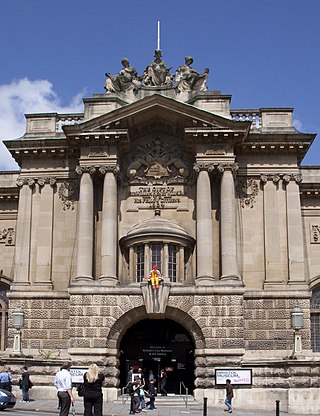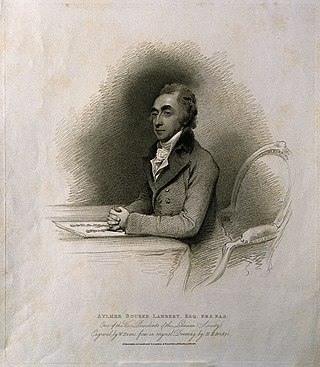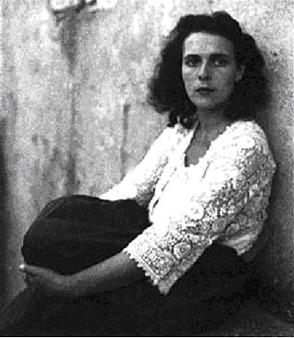
Desmond John MorrisFLS hon. caus. is an English zoologist, ethologist and surrealist painter, as well as a popular author in human sociobiology. He is known for his 1967 book The Naked Ape, and for his television programmes such as Zoo Time.

Taxidermy is the art of preserving an animal's body via mounting or stuffing, for the purpose of display or study. Animals are often, but not always, portrayed in a lifelike state. The word taxidermy describes the process of preserving the animal, but the word is also used to describe the end product, which are called taxidermy mounts or referred to simply as "taxidermy".
Stephen James Napier Tennant was a British socialite known for his decadent, eccentric lifestyle. He was called "the brightest" of the "Bright Young People".

Bristol Museum & Art Gallery is a large museum and art gallery in Bristol, England. The museum is situated in Clifton, about 0.5 miles (0.8 km) from the city centre. As part of Bristol Culture it is run by the Bristol City Council with no entrance fee. It holds designated museum status, granted by the national government to protect outstanding museums. The designated collections include: geology, Eastern art, and Bristol's history, including English delftware. In January 2012 it became one of sixteen Arts Council England Major Partner Museums.

Cabinets of curiosities, also known as cabinets of wonder and wonder-rooms, were collections of notable objects. Although more rudimentary collections had preceded them, the classic cabinets of curiosities emerged in the sixteenth century. The term cabinet originally described a room rather than a piece of furniture. Modern terminology would categorize the objects included as belonging to natural history, geology, ethnography, archaeology, religious or historical relics, works of art, and antiquities. In addition to the most famous and best documented cabinets of rulers and aristocrats, members of the merchant class and early practitioners of science in Europe formed collections that were precursors to museums.

Aylmer Bourke Lambert was a British botanist, one of the first fellows of the Linnean Society.
Madge Gill (1882–1961), born Maude Ethel Eades, was an English outsider and visionary artist.

Hackney Central is a sub-district of Hackney in the London Borough of Hackney in London, England and is four miles (6.4 km) northeast of Charing Cross.

Mary Leonora Carrington was a British-born surrealist painter and novelist. She lived most of her adult life in Mexico City and was one of the last surviving participants in the surrealist movement of the 1930s. Carrington was also a founding member of the women's liberation movement in Mexico during the 1970s.

The Egyptian Hall in Piccadilly, London, was an exhibition hall built in the ancient Egyptian style in 1812, to the designs of Peter Frederick Robinson. The Hall was a considerable success, with exhibitions of artwork and of Napoleonic era relics. The hall was later used for popular entertainments and lectures, and developed an association with magic and spiritualism, becoming known as "England's Home of Mystery".

Sebastian Horsley was an English artist and writer. Horsley's writing often revolved around his dysfunctional family, his flamboyant and eccentric behavior, his drug addictions, sex, and his reliance on prostitutes.
Tessa Farmer is an artist based in London. Her work, made from insect carcasses, plant roots and other found natural materials, comprises hanging installations depicting Boschian battles between insects and tiny winged skeletal humanoids.

The National Museum of Scotland in Edinburgh, Scotland, was formed in 2006 with the merger of the new Museum of Scotland, with collections relating to Scottish antiquities, culture and history, and the adjacent Royal Scottish Museum, with international collections covering science and technology, natural history, and world cultures. The two connected buildings stand beside each other on Chambers Street, by the intersection with the George IV Bridge, in central Edinburgh. The museum is part of National Museums Scotland. Admission is free.

The Wiltshire Museum, formerly known as Wiltshire Heritage Museum and Devizes Museum, is a museum, archive and library and art gallery in Devizes, Wiltshire, England. The museum was established and is run by the Wiltshire Archaeological and Natural History Society (WANHS), a registered charity founded in 1853. After the purchase of an old grammar school the museum was opened in 1873. Subsequently, it expanded into two Georgian houses on either side and still occupies this location today.

Montrose Museum opened in 1842 in Montrose, Angus, Scotland. The museum came into being when in 1841 the Montrose Natural History and Antiquarian Society started a fund to expand its space; in order to house its curiosities and wonders ranging from geological and ethnographical artefacts to a collection of natural history objects and fine art. It was accredited by the Museums, Libraries and Archives Council in June 2009.

Tribal art is the visual arts and material culture of indigenous peoples. Also known as non-Western art or ethnographic art, or, controversially, primitive art, tribal arts have historically been collected by Western anthropologists, private collectors, and museums, particularly ethnographic and natural history museums. The term "primitive" is criticized as being Eurocentric and pejorative.
Viktor Wynd is an artist, author, lecturer, impresario and committee member of The London Institute of 'Pataphysics.

The Last Tuesday Society is a London-based organization founded by William James at Harvard and run by artist Viktor Wynd with directors Allison Crawbuck and Rhys Everett, putting on absinthe tastings, literary and artistic events monthly.

Miranda Constance Lowe is a British museum curator. She is principal curator of crustacea at the Natural History Museum, London and a founder member of Museum Detox.















